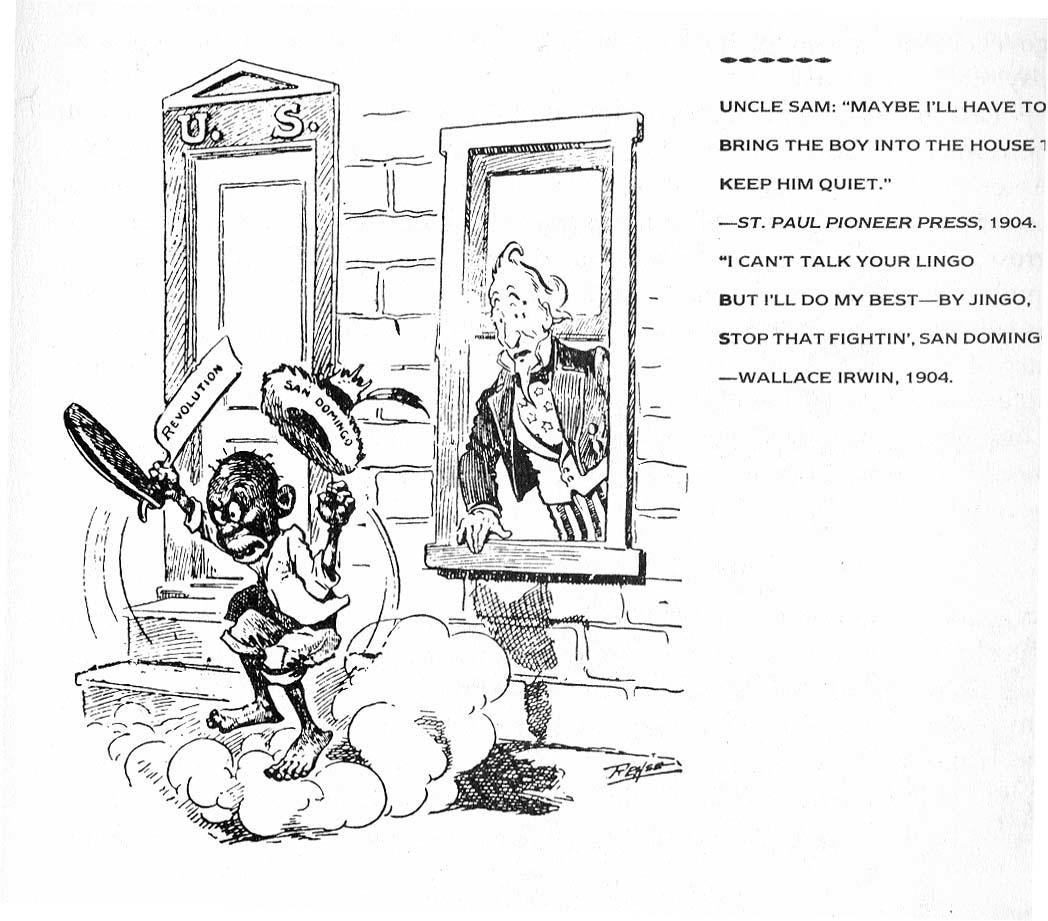Introduction
The term ‘American imperialism’ has been an important topic of debate in international politics and political science since 1900. While most scholars agree that the US created ‘imperialism’ towards the end of the Second World War, a some literature argue that the modern US and its involvement in international politics does not amount to imperialism. Nevertheless, the media has always attempted to depict the US as an imperial power. In the turn of the 20th century, various media houses were concerned with the increasing rate of the US involvement in foreign affairs, including domestic politics in foreign nations.
An important area of study as far as American involvement in foreign affairs in the 20th century is Latin America. Various studies and media reports have shown that American imperialism in Latin America started more than 150 years ago and was at its peak in the 20th century. The purpose of this paper is to review a media release in form of a cartoon, with an aim of analyzing the relationship between the US and foreign nations. In this cartoon, American imperialism is depicted in the 1904 cartoon released by St. Paul Pioneer Press.
Cartoon analysis

In the cartoon, two characters represent two different nations. The individual looking through the window seems to be worried of the actions of the other individual outside the house. It is clear that the person outside the house is attempting to clear something using a machete. He seems desperate to complete his task. A lot of dust is building around him and below his bare foot. In addition, he is black and appears dirty and unkempt. On the other hand, the individual on the window is a well-dressed and Caucasian man. His house is also neat and large, yet he is interested in the actions taking place outside his house.
Political aspects and American depiction of the world and its people
The writings on the cartoon and the explanations of the dialogue between the two individuals provide evidence that the topic of debate is the US interest in South America, especially in the Dominican Republic because the person outside the house has the label “San Domingo”, the capital city of the Dominican Republic. In addition, the phrase “Uncle Sam” is used to describe the neat individual, which means that he represents the US government.
Therefore, in this cartoon, it is clear that the revolution in the Dominican Republic in the early 20th century was an important issue to the US government. In the cartoon, Uncle Sam is contemplating what he should do to save the Santo Domingo from the revolution he is perpetrating. The American government was still undecided on whether to intervene in Dominican Republic in 1902. President Roosevelt was seeking to prevent European intervention in the Dominican revolution. While Uncle Sam seems to be interested in helping the Santo Domingo in this cartoon, it is evident that Roosevelt was only interested in preventing Europeans from occupying and controlling Panama Canal and its trade route. Thus, imperialism was evident.
The depictions of the individuals in the cartoon reflect how different people are depicted in the American society. The smart man depicts the Caucasoid race, which was the majority and most powerful and wealthy group in the US. They were regarded as powerful, intelligent and knowledgeable. On the other hand, the person representing San Domingo is black, unkempt and barefooted. He is also depicted as violent. These are the same words used to depict individuals of other races in the US, especially African Americans, Latinos and Hispanics. They were regarded as poor, dirty and violent but important to the American government.
Conclusion
The Americans and their government believed that they had the responsibility to control and guide foreign nations, especially those in South America, where military and social revolutions were common. Americans regarded themselves as smart, intelligent and powerful enough to influence political, economic and social systems in Latin America.
Works Cited
St. Paul pioneer Press. Uncle Sam and Santo Domingo. New York: St Pioneer Press, 1904. Web.